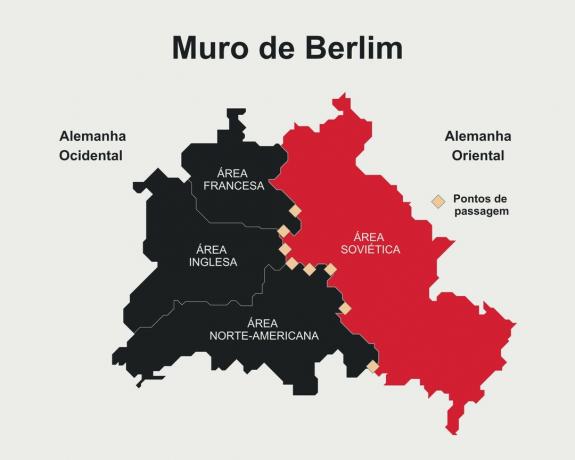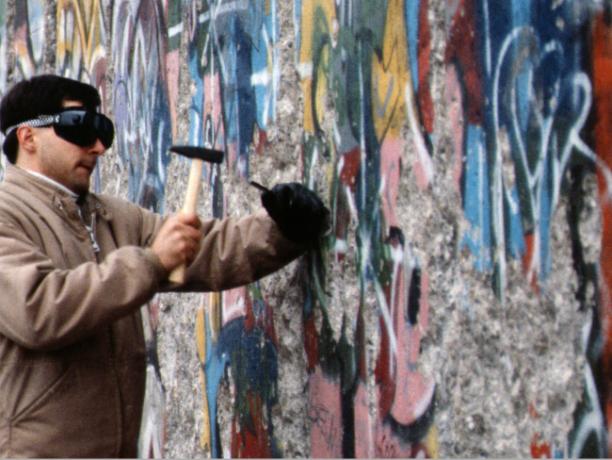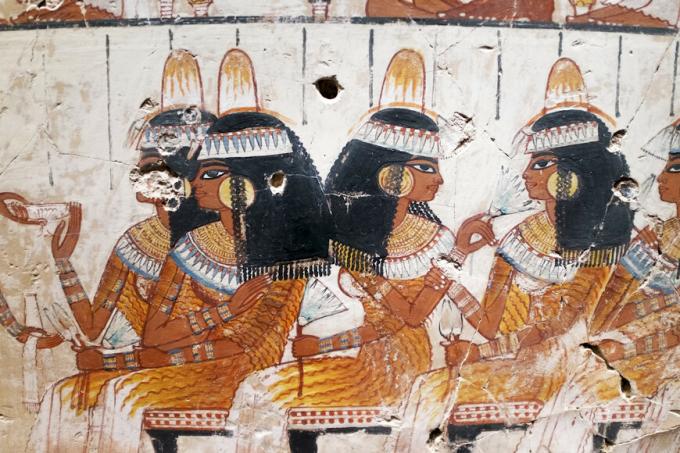The Berlin Wall was built in 1961 with the aim of surround thewestern part of the city of berlin, in Germany. The west side of the city was under the control of the U.S and the east, from Soviet Union.
With the end of World War II in 1945, Nazi Germany was defeated by Allied exercises, composed of the United States, England, France and the Soviet Union.
For this reason, its territory was divided among the winning countries. Berlin was situated in the eastern part of Germany, however, being the capital it was also divided among the victors.
On each side of the wall a different socioeconomic model was in effect, the North American west side lived in a system capitalist, while the Soviet east side lived a model communist.
The Berlin Wall was a symbol of this division and also a mark of the ideological dispute of the Cold War. The two economic models, US capitalism and Soviet communism, vied to be the dominant regime around the world.
The wall was built by the Soviet side in order to prevent migration to the capitalist side. It stood for 28 years, until 1989, when the population itself toppled it, symbolically signaling the
defeat of the communist system.
Construction of the Berlin Wall
The Berlin Wall was built by Walter Ulbricht, President of East Germany, on August 13, 1961. He ordered troops and army vehicles to make a barrier that prevented any civilians from passing between the western and eastern sides.
Germany was already under the command of foreign countries since the end of World War II. When it was defeated by the Allies, its territory was divided between the United States, England, France and the Soviet Union.
While the western side of the country, led by the United States, England and France, lived under a capitalist regime, the eastern part was ruled by a Soviet communist system. The territories were called:
- German Democratic Republic - who used the socialist regime;
- Federal Republic of Germany - which used the capitalist regime.
The criterion that established the division into West Germany and East Germany was the socioeconomic model tax to each of the parts of the country.

Even though East Germany has been under the command of the Soviet Union for about 20 years, it was only in the 1960s that there was a need to build the wall in Berlin. O objective of curbing the migration of people from the communist side to the capitalist side.
The construction took place suddenly and did not take into account existing streets or buildings on the site. Many families, friends and neighbors were separated and remained so for nearly three decades. Anyone who tried to jump over the wall could be arrested or killed.
The official reason for building the Berlin Wall was to protect the population from fascist elements. who would be conspiring against the will to build a socialist state in the eastern part of Germany.
The wall had 155 km long and was guarded by about 300 observation towers. In addition to being surrounded by armed soldiers, alarms, electric fences, guard dogs and traps, such as fakir”, which were lawns full of nails.
Fall of the Berlin Wall
In the 1980s, East Germany, like the Soviet Union, had a worsening of its economic crisis, including the lack of some products in the markets.
A economic crisis has also become a political crisis, due to strong popular dissatisfaction and the creation of movements opposed to the government.
In 1989 there was a wave of migration from East Germany to neighboring Hungary and Poland. These countries, despite also living in governments supported by the Soviet Union, went through moments of weakening of communist power.
For example: Hungary's opening of borders to western countries, and the election of a non-communist ruler in Poland.
Under pressure, the government of East Germany announced it would also open its borders, which caused a large number of people to go to the limits of the wall, with the aim of crossing the border.
The delay in opening the passage made the the crowd itself began to destroy the wall, on November 9, 1989. However, the demolition of the entire length of the wall only took place on June 13, 1990.

Berlin Wall and the Defeat of Communism
The fall of the Berlin Wall symbolized the victory of capitalism over communism in the Cold War. The opening of East Germany's borders and the fall of the wall soon after exposed the weakness of the regime to the world.
Since the 1980s, the USSR faced serious economic problems and was unable to face the competitiveness imposed by American capitalism.
The costs of the War in Afghanistan (1979 - 1989) and the need to maintain war material also helped to further depress the communist bloc.
Two years after the fall of the Berlin Wall, on November 8, 1991, the Soviet Union officially ceased to exist. With that, too ended the cold war, with capitalism coming out as the winning socio-economic model that started to be adopted in most countries.
With the communist defeat and the end of the USSR, Germany ceased to be divided into two blocs and unified, returning to being a single country.
See more about what communism, to the characteristics of communism and the differences between communism and socialism.
Berlin Wall: the symbol of the Cold War
The Berlin Wall was a symbol of the Cold War because concretely showed the ideological division that everyone faced during the Cold War.
Countries were divided between supporters of American capitalism and Soviet communism, and those who opted for one or the other, internally and externally faced resistance movements contrary.
The wall physically exemplified a division that took place not only in Berlin, but across the entire planet. Therefore, the fall of the Berlin Wall (taken down by the people themselves, especially those on the side Soviet), represented a dissatisfaction with the division and a supposed predilection for the model capitalist.
For this reason, the entire world closely followed the historic event, which was broadcast live on television and radio in several countries, including Brazil.
Learn more about Cold War and the capitalism.
The Berlin Wall today
The Berlin Wall was almost completely destroyed in 1989 and 1990, but some parts of the construction were left standing as a historical record and, today, are tourist attractions in Berlin.
It is possible to find parts of the wall in exhibitions around the city, however, most of the concrete wall has been transformed into a kind of art Gallery outdoors. The wall is full of graffiti and other expressions of art that even make political criticism.


